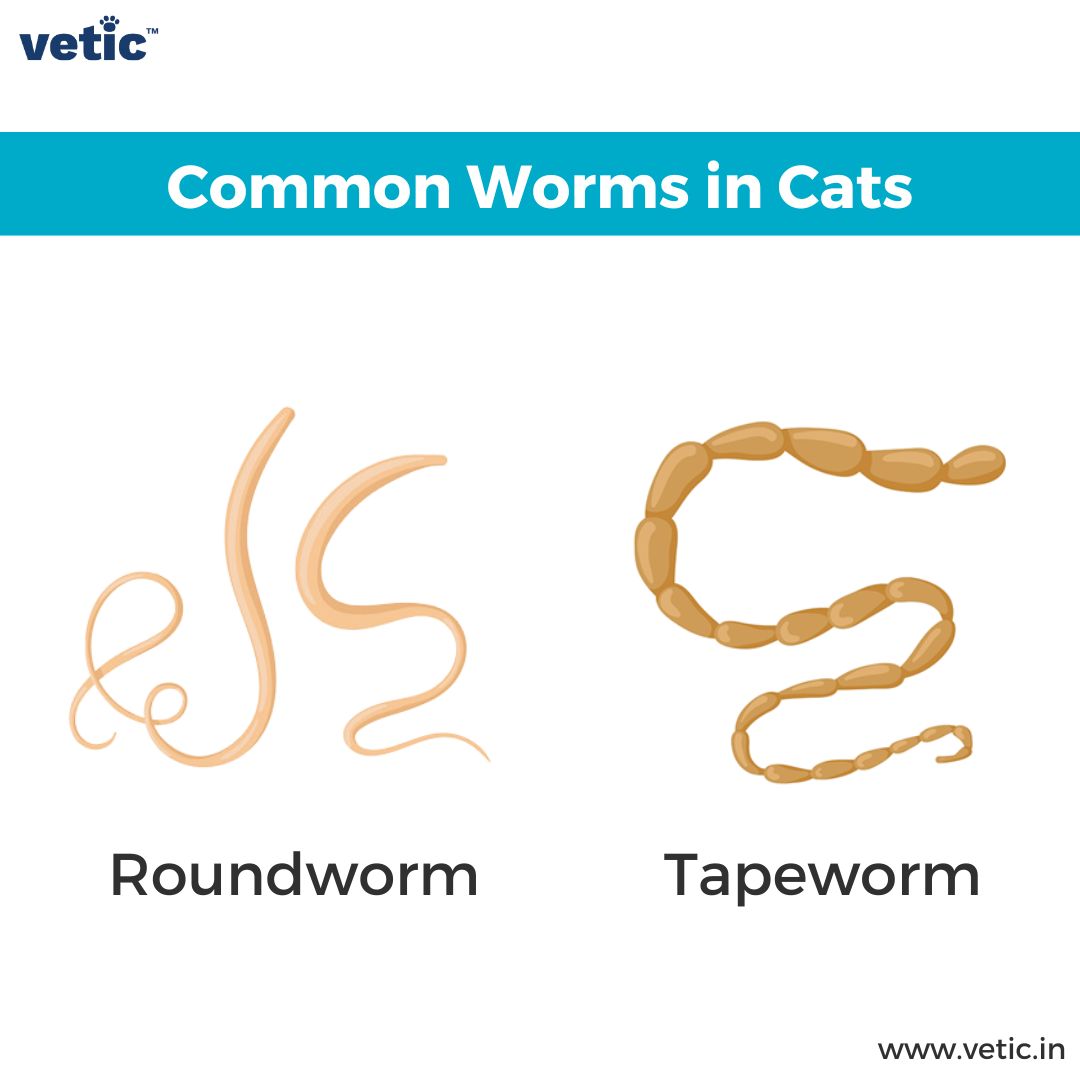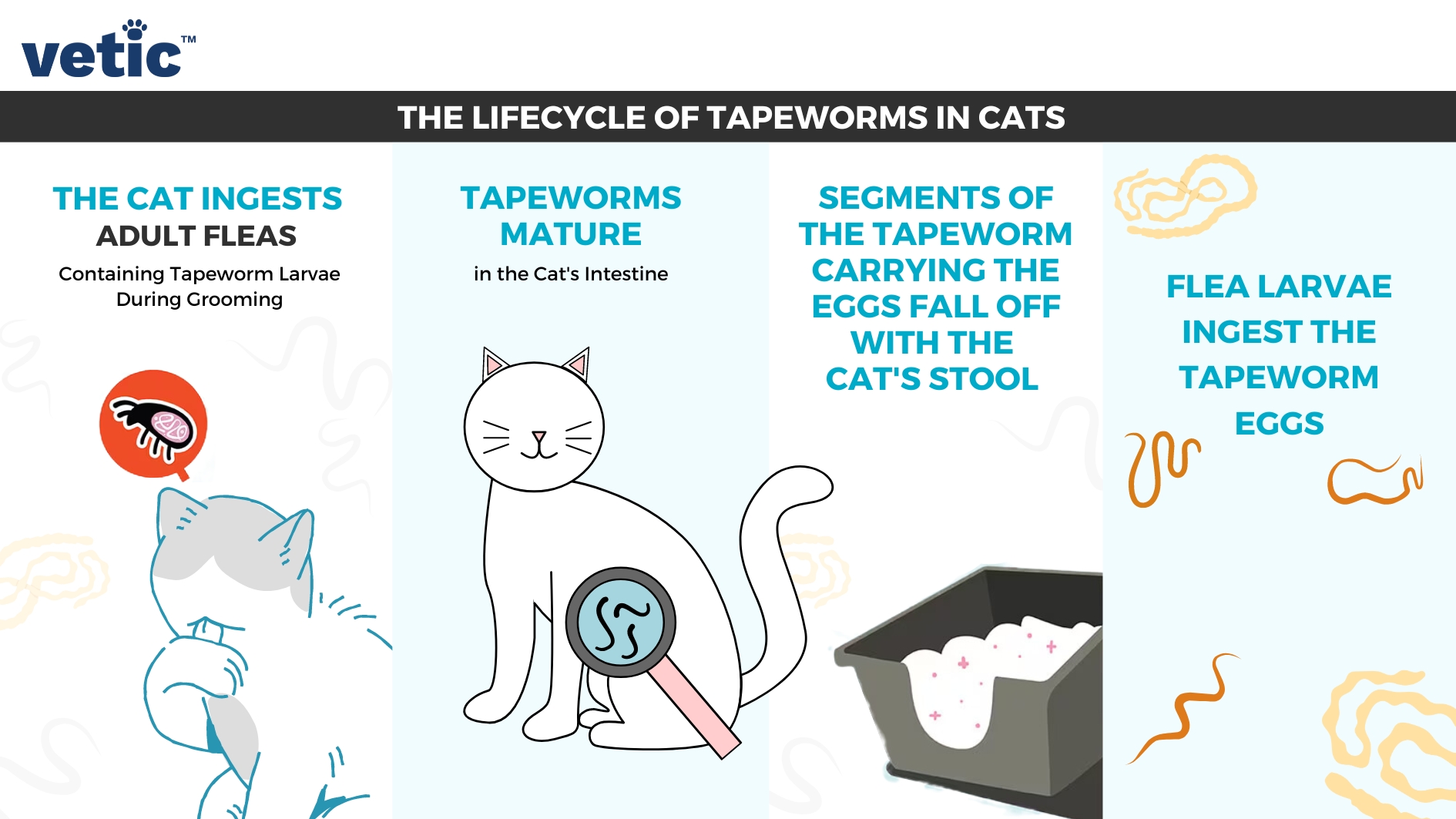Tapeworms in cats are very common in India. They are flat intestinal worms found in both dogs and cats. Tapeworms are segmented parasites that live in the small intestine of cats.
They belong to a family that’s different from roundworms and hookworms. Although more than 5 types of tapeworms can be found in dogs and cats, only one type (Diphylidium caninum) is most common in cats.
Tapeworms in cats can cause health issues ranging from mild diarrhoea to weight loss and malnutrition. Most veterinarians treat tapeworms in cats with a medicine called praziquantel. Keep reading more to know how a tapeworm affects a cat’s health and the right way to give the worm medication to your kitten or cat to rid them of these intestinal worms.
Why are Tapeworms Harmful for Cats?
They use their hook-like mouths to attach themselves to the small intestine wall and feed on the food your cat is eating. They can cause nutritional deficiencies in cats.
A high number of tapeworms can also cause digestive problems including bloody diarrhoea and vomiting in cats. They can further cause inappetence or unpredictable eating habits in cats, which can lead to weight loss along with recurring stomach upsets and vomiting.
What are the Types of Tapeworms in Cats?
Apart from the most common one Diphylidium caninum the following groups (genus) of tapeworms are common in cats –
- Taenia
- Echinococcus
Each group contributes to 2 specific tapeworms that infect cats and dogs frequently. The most common tapeworms found in cats belong to the Taenia group of worms.
What are the Signs of Tapeworm Infection in Cats?

Tapeworms are the only intestinal parasites that are visible through the naked eye. Tapeworms can grow up to 11 inches and may cause internal obstructions.
- Often, these worms break into smaller segments and come out with the cat’s poop. You can see the larger segments (1/8th to 1/4th inches long) in your cat’s poop.
- An infected cat may also have segments of tapeworm stuck to the fur near their butt.
- Your cat may also drag their anus (scoot) across the carpet, bed, or floor due to the excess itchiness caused by tapeworms.
When there is a huge population of tapeworms in a cat, the animal may show the following signs –
- Severe weight loss
- Malnutrition
- Weakness
- Dull coat
However, most cats don’t show any signs of tapeworm infection until a large number of worms accumulate in their small intestine.
How Do Cats Get Tapeworms?

Commonly, cats get tapeworms from infected fleas.
So, this is how a cat gets tapeworms (the lifecycle of a tapeworm) –
- A flea larvae (immature flea) ingests a tapeworm egg.
- The tapeworm egg keeps developing as the flea larva develops into an adult flea.
- The adult flea then jumps on a cat.
- The cat ingests the flea during grooming.
- The flea is digested in the cat’s stomach and that releases the tapeworm egg.
- The tapeworm egg then hatches and the adult tapeworm attaches to the cat’s small intestine.
Next, when the cat passes the tapeworm segments containing the eggs, flea larvae can eat these eggs and infect multiple other cats.
Are your Cats at a High Risk of Tapeworm Infection?

If your cat spends a lot of time outdoors or hangs around with outdoor cats they are at a higher risk of getting tapeworms.
Cats that hunt rodents and other small animals frequently are at a greater risk of tapeworm infections (rodents are the intermediate hosts of tapeworm larvae).
How are Tapeworms in Cats Diagnosed?
It is quite common for cat parents to identify tapeworm infestation in their cats from the physical signs we have mentioned above.
Rarely, cats have to visit veterinarians with more severe symptoms including gastroenteritis for diagnosis.
Sadly, tapeworms are difficult to diagnose through conventional stool examination methods.
What is the Treatment for Tapeworm in Cats?
Deworming is the direct way to kill adult tapeworms in cats. However, you need to use the correct composition and quantity of dewormer as per your cat’s age and weight.
Your veterinarian is the best person to guide you regarding the choice and use of dewormers in cats. If your cat has more than one type of tapeworm or a heavy infestation the vet might recommend a specific course of tapeworm treatment.
After deworming, do not expect to see tapeworms or fragments of worms in your cat’s stool. Dead worms are readily digested by cats.
Deworming rarely has side effects, such as nausea, vomiting, diarrhea, bloating ,and lack of appetite. If these symptoms continue for longer than 12 hours take your cat to a veterinarian.
What is the Prognosis of Tapeworm Treatment in Cats?
Tapeworm treatment using a combination of cat dewormers and cat flea control products has a fair prognosis.
Can You Prevent Tapeworms in Cats?

Keep your cat away from fleas and rodents that may be intermediate carriers. Cat flea treatment is an effective way to minimize the risk of tapeworm infestation in your cats.
At the same time, clean your household using cat-friendly anti-flea products to get rid of fleas.
Without flea control, tapeworm re-infestation can occur within 4 to 6 weeks.
Can You Get Tapeworms from Cats?
It is possible but rare for humans to get tapeworms from cats since it is transmitted by fleas.
Echinococcus is another group of tapeworms that can cause serious illnesses in humans. It is what experts call a zoonotic concern.
Therefore, it is mandatory for cat parents to deworm their cats periodically as per the veterinarian’s advice.
If you think your cat has tapeworms, talk to a veterinarian immediately!!
